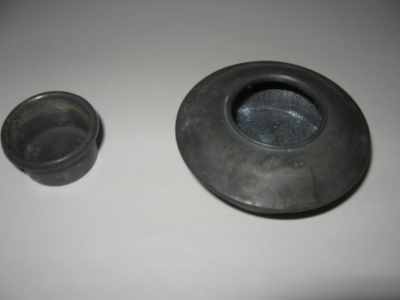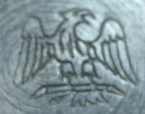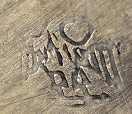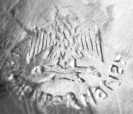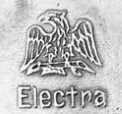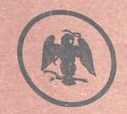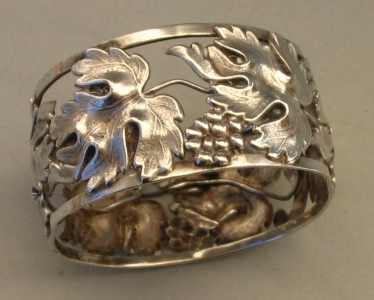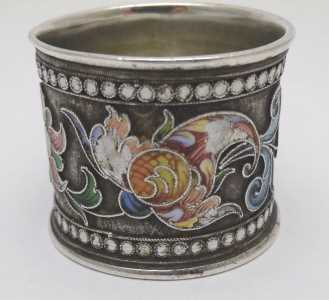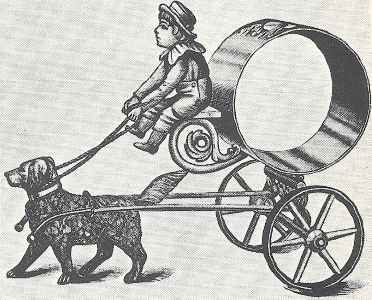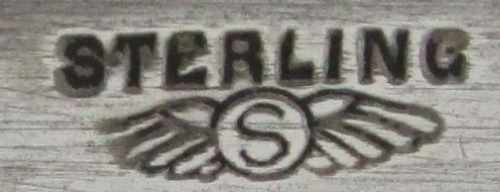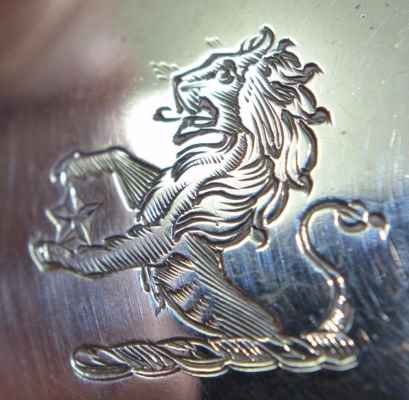YOUR GUIDE TO OCTOBER NEWSLETTER:
articles
new members
members' window
mail to ASCAS
replies to questions
a page per month
a silversmith per month
a word per month
a book on my shelf
a crest per month
a year per month
contributors to this Newsletter
search engine
disclaimer and privacy policy
A new article for ASCAS website
David N. Nikogosyan presents:
Armand Frenais silversmith company - A rival of Christofle

Anyone who starts to collect or to study French silver plate, inevitably starts with the CHRISTOFLE company, the world-known pioneer for the industrial application of galvanic silver deposition [1]. However, CHRISTOFLE silver & silver-plate products are well described and very much sought after and therefore are often quite expensive and/or rare (especially hollowware in a good condition). At the same time, besides CHRISTOFLE another twenty (or thirty) prominent French jewellery companies are known [2], who manufactured good-quality, beautiful and relatively cheap (nowadays) silver-plated products at the end of XIXth/beginning of XXth century. The main disadvantage with collecting such objects is the nearly complete lack of any information concerning their history and marks. Today I want to present one of such companies, the ARMAND FRENAIS foundry......
click here

New members
Welcome to new ASCAS members:
Nancy Barkhouse - Canada
Jayne Cotten - USA
Mail to ASCAS:
e-mail
silverassociation@yahoo.it
Larry Elmquist writes:
...I am having trouble finding any information on a piece of sterling (?) silver marked STUMPF. It belonged to a Jewish family that emigrated to central Kansas. Pre or post war unknown. It appears to be a cake knife/server and is EXTREMELY ornate. It bears two hallmark stamps. The first consists of three symbols in relief. The first two symbols suggest either "Iron cross" or "maltese cross". The third symbol is not recognizable (to me). The second hallmark, also in relief is "W. "
Thank you very much
Larry Elmquist
Andrew J. Brasch writes:
...I'm trying to identify who is the silversmith of this old Viennese
cup. The mark is A.E or A.L.
Thank you so much
Andrew J. Brasch
Warren Danos writes:
...I have a Christofle silver plate chafing dish/bowl or hot plate that I would like to find out more about. The bowl has number 950333 on it as well as a 3 and a 2 in squares indicating the silver plate thickness; the top plate has number 1462455 on it.
Both the top plate and the bowl have the Christofle marks and name on them. The top plate measures 9.5" wide and the bowl w/top plate is 4" high. Have included some pics but was not able to get a good picture of the numbers or Christofle mark.
From the numbers the top plate is from Jan 1890 and the dish/bowl from July 1879 according to the ASCAS website. How rare is the item and what is the gold looking metal that is under or over the silver plate on the side of the bowl around the monogram?
Is that really a monogram on the side of the bowl and if so what are the letters?
The item belonged to my wife's great grandmother who lived in Paris in the late 1800's. Cannot find any other chafing dish like it after an extensive search so any additional info would be greatly appreciated.
Thanks.
Warren Danos
Robert Merritt writes:
...I am an avid visitor of your site and it has helped me extensively through the years.
I do ask if you can help with identifying a set of hallmarks which have me stumped.
If you can help in any way I would greatly appreciate any assistance.
Robert Merritt
In this column we presents a page obtained from makers'
brochures, books, auction catalogs, advertising or whatever
other printed paper, related to silver, that may be of interest
for ASCAS members.
The images will be published at a "low resolution" level and for
private and personal use only.
This column is published under the kind permission of Giorgio
Busetto's website
OTHERS FACTORIES, PLANTS, SALESROOMS,SHOPS AND WORKSHOPS: OLD IMAGES

This month ASCAS presents an image from an old catalog of
KALLMEYER & HARJES METALLWARENFABRIK
The firm was established in Gotha (Germany) in 1887 by Philipp Harjes (1860-1933) and Hermann Kallmeyer.
In 1890 the factory was destroyed by a fire and another building complex was erected immediately. In 1896 the complex was expanded in a new building (Waltershäuser Strasse 1).
In 1899, after the death of Kallmeyer, Harjes became unique proprietor.
Kallmeyer & Harjes was one of the most important Gotha companies in the metalworking industry. From 1890 to 1896 the number of employees rose from 150 to 300 reaching about 500 workers in 1909.
Some years before Harjes' death the property passed into other hands and the firm went in bankrupt in 1938/1939.
The trade mark of the firm was an eagle with spread wings in various combinations (also with a snake in the beak).
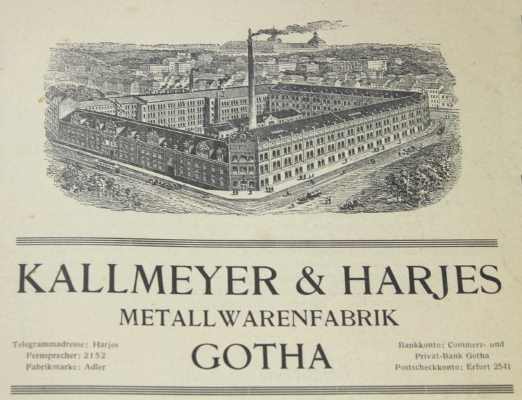
In this column we present an abstract from a page of the "What is? Silver Dictionary"
courtesy of

 NAPKIN RING
NAPKIN RING
A circular, elliptical or hexagonal band used to enclose a rolled table napkin and identify the user of the napkin.
Such rings are variously decorated and sometimes bear the engraved name, initials or monogram of the user.
Silver napkin rings were created in different styles and techniques including bright cut, niello and enamel (cloisonné, champlevé, plique á jour).
Napkin rings are a European invention and the first examples appeared in France around 1830.
According to the Oxford English Dictionary, the first known appearance of the term "napkin ring" in literature was on page 275 in a book entitled Workwoman's Guide, published in London in 1838. This handbook of needlework, knitting, etc. contained directions for knitting "checked napkin rings" to be stiffened with wire or buckram. Although the appearance of napkin rings in literature does not prove the date of their origin, it might be a clue as to the period in which they came into general use.... MORE...
In this column
we present marks, information and history of silversmiths and
silver manufacturers.
This column is published under the kind permission of Giorgio
Busetto's website

GEORGE W. SHIEBLER & CO
George W: Shiebler (Baltimore 1846 - New York 1920) in 1875 purchased the business of Coles & Reynolds, manufacturers of silver spoons and in 1876 began the activity under his own name employing a work force of five men.
In 1883 he purchased the factory of Morgan Morgans, merging this plant with his others.
After the acquisition of flatware dies of A & W Wood, Henry Hebbard, Hebbard & Pothamus and Theodore Evans & Co he moved the factory to Brooklyn.
In the beginning Shiebler made only spoons and forks but its line was gradually expanded to a largest line of silverware.
Shiebler was a highly skilled and innovative designer and over the years obtained a number of patents flatware patterns and souvenir spoons......
MORE...
In this column we
present images and descriptions of Crests and Mottoes of British,
Irish and Scottish families as engraved on silver items.
This column is published under the kind permission of Giorgio
Busetto's website

FAMILY CRESTS: LIST OF NAMES
ILLUSTRATED DIRECTORY OF FAMILY CRESTS
DILLON
The crest of:
1) Dr T.G. of Coolmeen, co Roscommon
2) Luke Gerald, Esquire of Seahamm Durham
The Latin motto is 'Dum spiro spero' (while I breathe, I hope)
The crest is 'a demi lion, rampant, between paws a star'
The crest was found on crystal jar with silver cover hallmarked London, 1902, maker Samuel Smith & Son Ltd

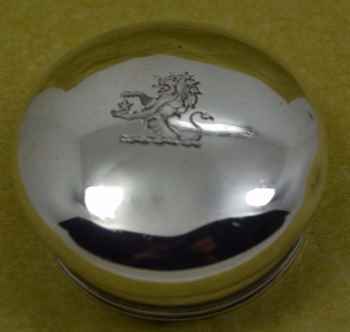
DISCLAIMER AND PRIVACY POLICY
ASCAS is a community of people having a common
interest in antique silver.
It is a non-profit association without commercial links.
Membership is open to whomever has a true interest in
this subject matter.
ASCAS has no real property and no fees are requested nor
accepted from members.
ASCAS keeps in touch with its members only through
periodical newsletters, e-mails and web-site updating
and ignores and is not responsible for any other
activity pursued by its members.
Likewise, ASCAS is not responsible for opinions,
evaluation and images displayed, and in any form
published or supplied for publication, by its members
who, in any case, maintain the property of their works
and assure the respect of national and international
legislation about Intellectual Property.
ASCAS does not have the full addresses of its members (only
town, country and e-mail address are requested for
membership).
ASCAS handles and protects with care its members' e-mail
addresses, will not disclose the addresses to third
parties, will use this information only to reply to
requests received from members and for communications
strictly related to its activity.
These rules are expressly accepted by submitting the
membership request.
|
|
















